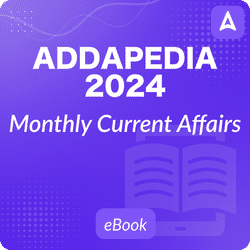Addapedia Editorial: Daily News Editorial PDF, 21 October 2024: Hello Aspirants ADDA 247 is back with Editorial Analysis in English. your daily source for in-depth news coverage and insightful editorial analysis. In this section, we comprehensively examine the latest national and international events, current affairs, and the historical context behind today’s most pressing topics. Our goal is to provide you with a well-rounded perspective on the news, helping you understand not just the headlines, but the intricate details and background that shape our world. This ADDAPEDIA Editorial Analysis will help you understand the National and International events Current affairs and the background of a particular topic. This comprehensive News analysis will help you in Clearing CA and Interview for many exams.
Adda247 APP
Essential business priorities in a changing world
Context: Role of businesses in addressing global challenges and promoting inclusive growth, particularly in the context of the B20 process and recent global economic developments
What are the key priorities for businesses to address global challenges?
- Focus on inclusive development through skill development, education, and financial access
- Ensuring better food security by promoting sustainable food systems
- Accelerating resilient global trade flows ensuring minimal disruption in the wake of any emergencies/ uncertainties.
- Leading digital transformation and innovation, including responsible use of AI
- Pursuing sustainability and net-zero transition
- Maintaining high standards of corporate governance
How can businesses contribute to inclusive development?
- Offer tailored programs for skilling and upskilling workers, especially women
- Provide on-the-job training and collaborate with academic institutions
- Implement diversity and inclusion policies
- Expand footprint in Africa to support its inclusion in global value chains
What role can businesses play in addressing food security?
- Advocate for sustainable agricultural practices
- Invest in infrastructure and agricultural technologies like precision farming
- Foster collaborations with governments and international organizations
- Use technology and digital tools to reduce waste and ensure equitable access to nutritious food
How can businesses lead in digital transformation and innovation?
- Harness AI for responsible use in healthcare, climate change, and resource management
- Engage youth in developing innovative solutions to pressing issues
- Invest in and mentor social tech startups
- Develop digital platforms for R&D collaborations
- Focus on developing STEM talent
Can you answer the following question?
In the context of global economic challenges and the B20 process, critically examine the role of businesses in promoting inclusive growth and sustainable development.
On climate finance to developing nations
Context: The 29th Conference of the Parties (COP29) of the UNFCC to be held in Baku, Azerbaijan, from November 11 to 22 is expected to be a “finance COP” as key climate finance issues feature at the top of its agenda.
- The 2009 Copenhagen Accord had developed countries commit to providing $100 billion a year in climate finance to developing countries by 2020,
Are developing states more at risk?
- Yes, developing countries are among the most vulnerable to climate change effects due to geographical factors and their reliance on climate-sensitive sectors like agriculture.
- Developing countries have contributed relatively little to cumulative emissions causing climate change.
- According to the Sixth Assessment Report of the Intergovernmental Panel on Climate Change, developed countries account for 57% of cumulative global emissions since 1850 despite hosting smaller populations than the developing world.
- Developing countries also face competing developmental needs, vexing their ability to take climate action by themselves.
- 675 million people in the developing world didn’t have access to electric power in 2021
- Developing countries lag behind in cleaner technologies & process making it costly to adopt them.
- Also, the cost of capital for solar photovoltaic and storage technologies is about twice as high in developing economies than in developed ones
What is climate finance?
- The United Nations Framework Convention on Climate Change (UNFCCC) defines climate finance a local, national, or transnational financing that seeks to support mitigation and adaptation actions addressing climate change.”
- Sources of climate finance can be public or private, and flowing either domestically or across borders)
- As per OECD, International public climate finance is composed of commercial and concessional loans (largest share of 69.4%), grants (28%), equity and other instruments.
- However, developing countries point out the shortcomings:
- They represent commitments to provide climate finance & not actual disbursals;
- Some of them are simply a reclassification of existing aid and not a new one.
How much does India need?
- India has both short-term and long-term climate targets.
- By 2030, India aims to
- install 500 GW of generating capacity from non-fossil-fuel sources;
- five million metric tonnes per annum of green hydrogen (GH2) production capacity;
- differentiated levels of penetration for various Electric Vehicle (EV) categories.
- Achieving 450 GW of renewable energy by 2030 will require an additional ₹16.8 lakh crore investment.
- Per the National Green Hydrogen Mission, India’s GH2 target will need ₹8 lakh crore.
- Consumers will also need to spend around ₹16 lakh crore to purchase EVs to achieve this vision.
- A long-term perspective reveals a greater requirement: ₹850 lakh crore in investments between 2020 and 2070 to achieve net-zero emissions.
What should the NCQG quantum be?
- Determining a new annual climate finance mobilisation target — called the New Collective Quantified Goal (NCQG) — is a top priority.
- The NCQG should include flows that are
- Actual disbursals, not just commitments;
- New and additional
- Public capital in the form of direct grants; and
- Private capital that is mobilised by public capital. However, organically flowing private finance to developing countries should not be counted.
- An independent high-level expert group constituted by the presidencies of COP26 and COP27 has already determined that developing countries (excluding China) will require around $1 trillion in external finance by 2030.
Can you answer the following question?
Discuss the challenges faced by developing countries in accessing and utilizing climate finance. How can the international community ensure a more equitable and effective distribution of climate finance to support global climate action?
Adda247 Telugu YouTube Channel
Adda247 Telugu Telegram Channel
| Adda247 Telugu Home page | Click here |
| Adda247 Telugu APP | Click Here |















